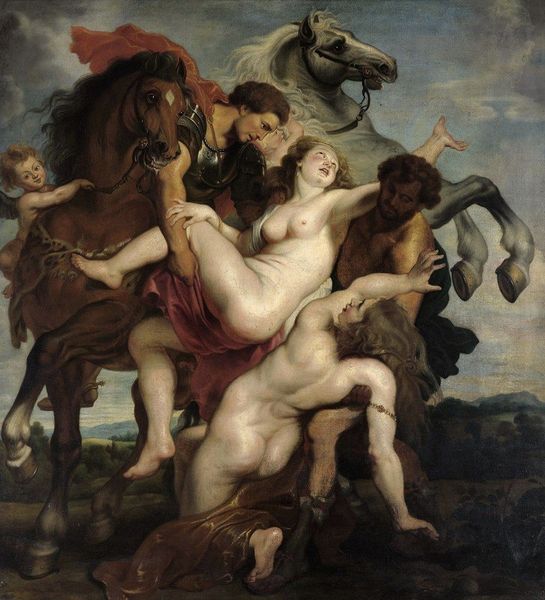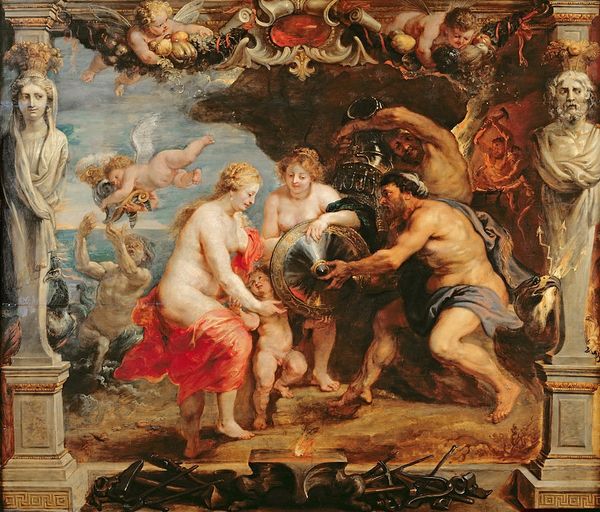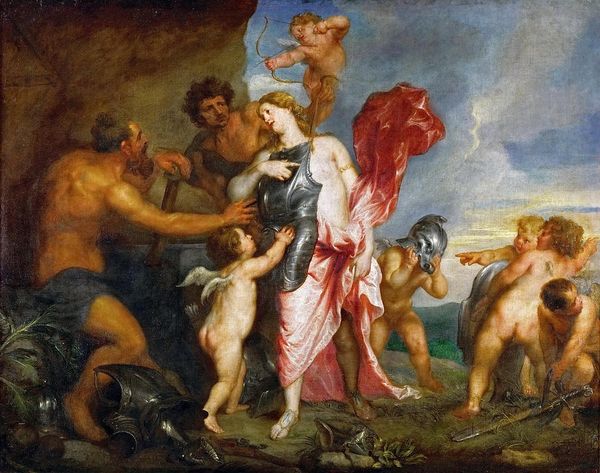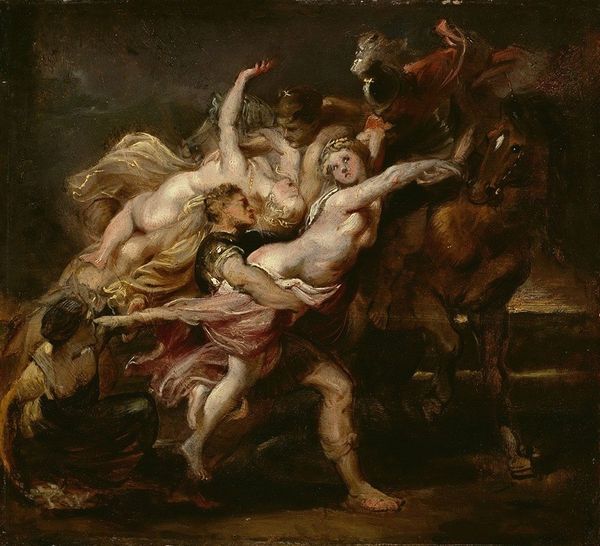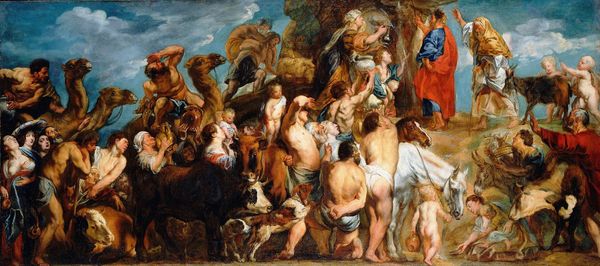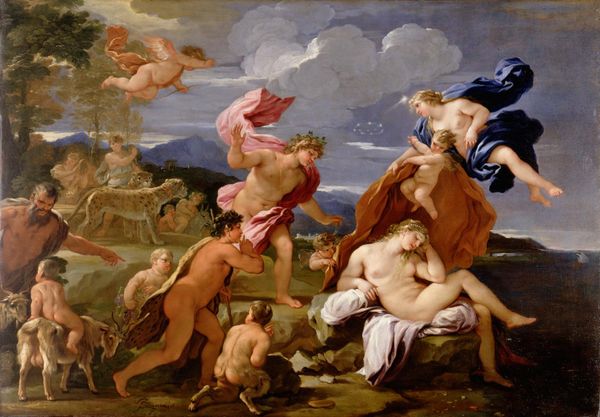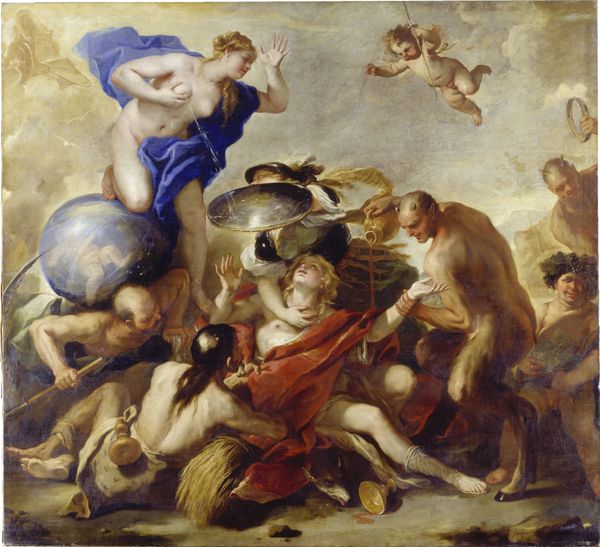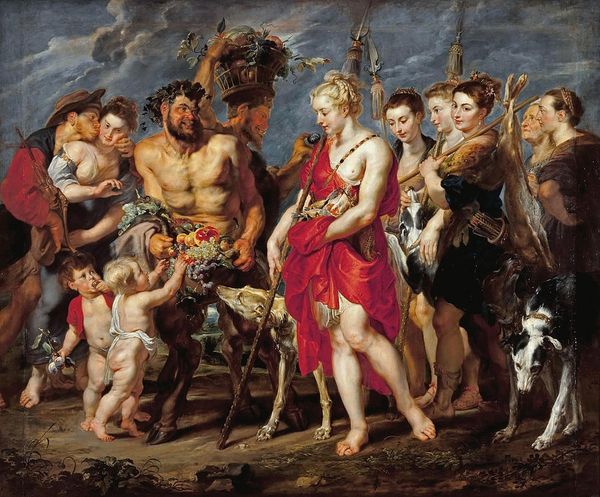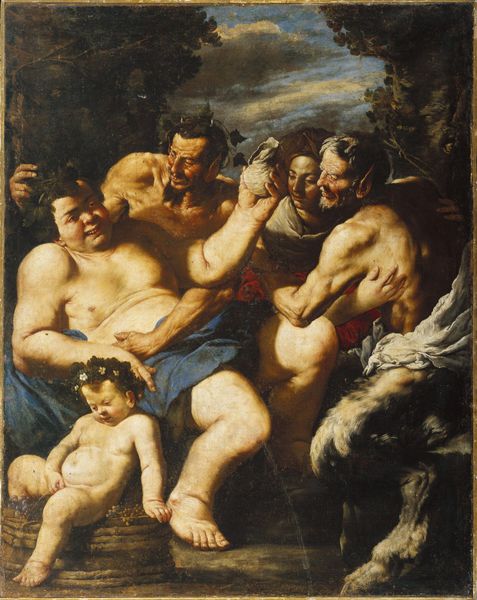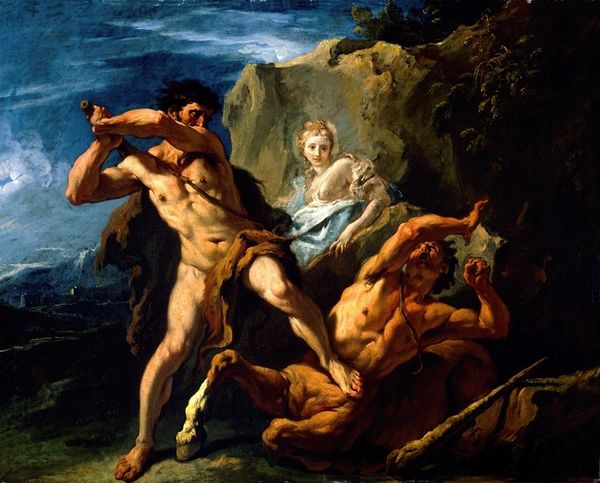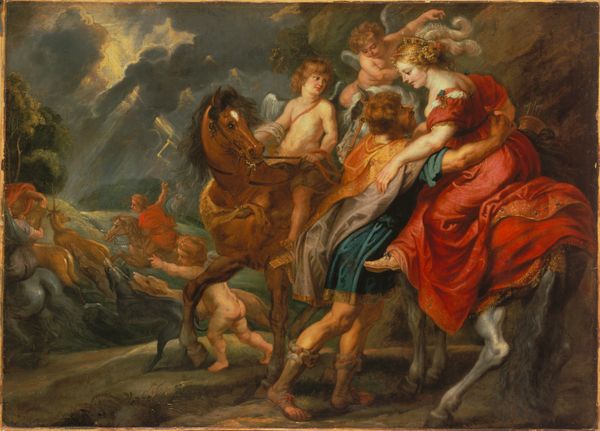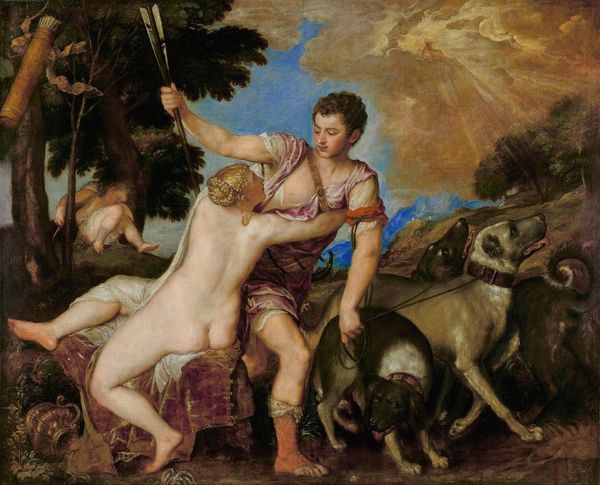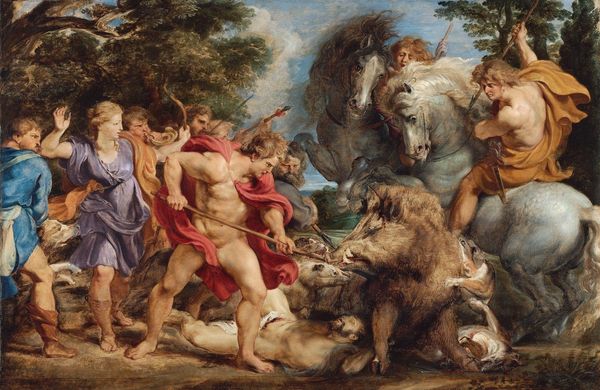
painting, oil-paint
#
allegory
#
baroque
#
painting
#
oil-paint
#
figuration
#
oil painting
#
female-nude
#
mythology
#
history-painting
#
nude
Dimensions: 224 x 210.5 cm
Copyright: Public domain
Curator: Rubens’ "The Abduction of the Daughters of Leucippus," painted around 1618, portrays a scene of dynamic struggle rendered in oil on canvas. What's your initial response to this historical work? Editor: Chaos! My first impression is dominated by the swirling figures. There's a compositional density that feels almost overwhelming, though the color palette, that creamy flesh against the rich fabrics, is undeniably appealing. Curator: It’s indeed a maelstrom of bodies, all meticulously arranged. Rubens is tapping into a classical myth—the Dioscuri, Castor and Pollux, sons of Zeus, kidnapping the daughters of Leucippus. This wasn’t just random violence. It speaks to marriage rituals, patriarchal power, and perhaps even a commentary on the perceived ‘order’ of mythological narratives versus the reality. Editor: Visually, the strong diagonal thrust is compelling; from the rearing horses down to the tangled limbs below. The dynamism is achieved through complex foreshortening, light and shadow creating volume in all the right places... What’s striking to me, however, is the asymmetry. Look at how the darker horse and rider contrast the paler ones – it destabilizes the balance. Curator: That darker horse perhaps represents the earthly aspect of Castor, as opposed to Pollux's divine association with the whiter steed? The figures' writhing poses speak of conflict and resistance. Remember, Rubens was a master of Baroque dynamism. Editor: Absolutely, and it’s echoed throughout: in the contrast between smooth skin and coarse horsehair, the gleam of metal armor against soft fabrics. Those textural contrasts reinforce the entire experience. Curator: Exactly. This ‘abduction’ becomes more than a simple act. It's laden with complex symbolism concerning fate, desire, and power dynamics ingrained in that period. We should be mindful, however, that these themes reflect historical, gendered concepts rather than necessarily our current social views. Editor: An important distinction, I think. Regardless, this image lingers. It provokes consideration of form and symbolic meaning. Curator: Indeed. "The Abduction of the Daughters of Leucippus" leaves us contemplating the weight of history carried in visual language. Editor: And the ever-fascinating interplay between visual form and thematic content. A robust engagement from Rubens.
Comments
No comments
Be the first to comment and join the conversation on the ultimate creative platform.
